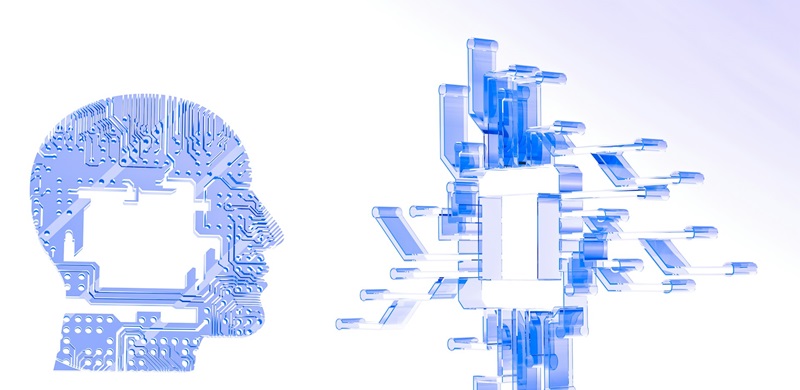In an era where digital technology is at the forefront, artificial intelligence (AI) is transforming various sectors, including political discourse. The innovative concept of using AI to bring back the ideas of notable historical figures to the present offers a unique method to reassess their philosophies in light of contemporary issues. Imagine engaging in a conversation with the minds of the past, enabled by AI – a scenario that not only sparks educational interests but also ignites spirited debate.
This technology has the power to recreate historical dialogues, which could provide a nuanced understanding of political thoughts from different eras. However, it also poses significant challenges concerning the accuracy and ethical implications of reanimating these voices. There is a thin line between educational innovation and the potential misrepresentation of historical figures for current political agendas. As remarkable as it may seem to interact with the recreated voices of history, we face the risk of distorting the original context and intent of their ideas, with AI potentially being misused to alter or manipulate their messages. Hence, while AI opens up exciting educational possibilities, it simultaneously demands a cautious approach to preserve the integrity of historical discourse.
Reviving Historical Figures through AI
The process of crafting AI personas of historical characters is both intricate and fascinating. Initially, it involves gathering vast amounts of data, such as recorded speeches, written works, and biographical information. Subsequently, machine learning algorithms analyze these data points, learning to mimic the speech patterns, writing style, and other distinctive attributes of the figures. This technology promises to make educational experiences more immersive, exemplified by the Vincent van Gogh exhibit at Musée d’Orsay, where visitors engage in interactive conversations with a lifelike representation of the artist derived from his letters.
In instances such as these, the public can gain unprecedented access to historical perspectives, allowing for a deeper connection with the past. AI-generated personas can facilitate dialogues that urge individuals to ponder complex political theories and moral philosophies through the insightful lenses of figures like Marcus Aurelius or George Washington. However, while educational implications are profound, questions about the interpretative liberties taken by AI programmers and the impacts these portrayals might have on collective memory remain crucial considerations.
The Deepfake Dilemma
With the advent and acceleration of deepfake technology, video and audio manipulations have become alarmingly convincing, employing advanced neural networks that can fabricate realistic content. This raises significant issues within politics, where deepfakes can be exploited to create fake endorsements or speeches, eroding public trust in political figures and media.
Imagine a scenario where a political campaign uses a cloned voice of President Biden in a robocall to fraudulently endorse a candidate or policy. Public reactions might range from confusion to outrage, with the potential to sway opinions based on misinformation. The implications for democratic societies are severe, as the ability to discern fact from fabrication becomes tangled. Trust in what we see and hear, foundational to healthy political discourse, is jeopardized by this burgeoning capacity to distort reality.
The Political Potential of AI Personas
The notion of an AI persona entering the political arena carries with it a trove of possibilities and pitfalls. Consider “Milkbot,” a speculative digital candidate modeled on Harvey Milk, an iconic political figure. Could such an AI maintain the ideals of its human counterpart, or would it simply mirror the biases of its creators? The potential benefits of a digital candidate—consistency, tireless campaigning, and processing vast amounts of data to make informed decisions—are intriguing.
However, replacing human candidates with AI personas raises fundamental questions about the essence of political representation. Democracy, at its core, involves human representatives empathizing and connecting with their electorate. Even if technology advances to the point where AI entities can campaign, they would lack the intrinsic human experience and emotional depth authentic to voter relations. The implications on voter interaction, campaign strategies, and authenticity within the political sphere would require a redefinition of what it means to hold office.
AI’s Dual-Edged Impact on Democracy
On one side, AI could become an invaluable tool to engage citizens politically, facilitate interactive learning, and support a well-informed electorate. By simulating conversations with historical figures, AI can provide vivid insights into political and philosophical debates, enriching public understanding and encouraging civic involvement.
Conversely, the manipulation capabilities inherent to AI technology usher in ethical concerns to the forefront. There is an undeniable risk that such technology can be used to distort and deceive, undermining the very foundations of democratic engagement. The balance between harnessing AI’s potential for innovation and upholding political integrity stands as a critical challenge for modern democratic societies. With great power comes great responsibility, and AI’s dual-edged sword is sharpened on both sides by the implications of its use and abuse.
Navigating Ethical Boundaries
Ethical debates are intensifying as AI pushes the boundaries of what’s possible. The resurrection of historical voices for education and engagement walks a fine line—veering too far might result in deceptive manipulation that distorts historical legacies. It’s crucial to consider how AI representations pay homage to these figures respectfully while avoiding misleading interpretations that could serve political agendas.
Creating a policy framework that governs the use of AI in political contexts is paramount. Regulation must encourage transparency and accountability, potentially involving the implementation of marks or disclosures indicating AI-generated content. This would help navigate the digital future of political discourse, where citizens can benefit from technology’s offerings without falling prey to sophisticated manipulation that threatens electoral and democratic processes. As AI technology continues to evolve, society’s challenge will lie in harnessing its potential while vigilantly safeguarding democratic values and ethical standards.

